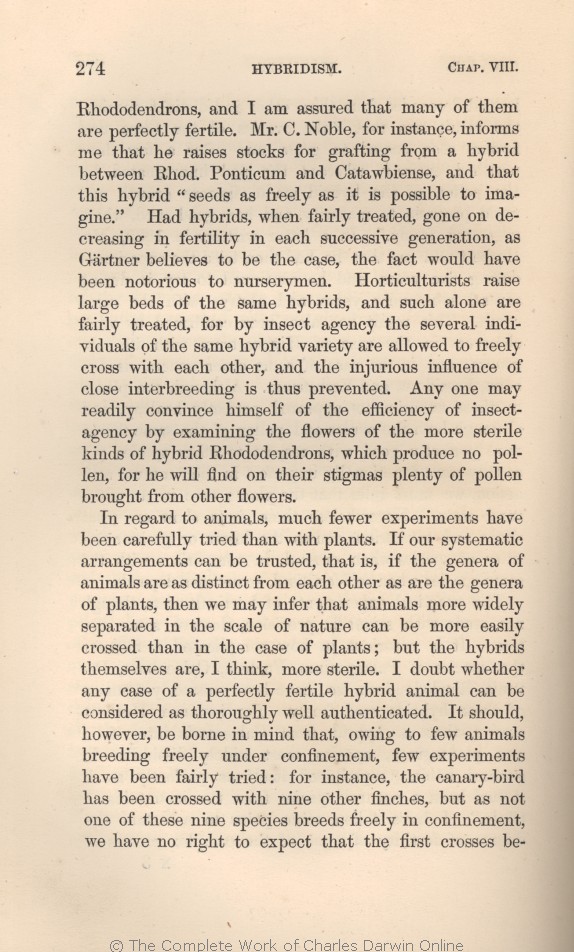Rhododendrons, and I am assured that many of them are perfectly fertile. Mr. C. Noble, for instance, informs me that he raises stocks for grafting from a hybrid between Rhod.
Ponticum | Ponticum 1859 1860 1861 1866 1869 | | ponticum 1872 |
| Catawbiense, 1859 1860 1861 1866 1869 | | catawbiense, 1872 |
| gone 1859 1860 1861 | | always gone 1866 1869 1872 |
| believes 1859 1860 1861 | | believed 1866 1869 1872 |
| nurserymen. 1859 1860 1861 1866 1869 | | nursery-men. 1872 |
| hybrids, 1859 1860 1861 1866 1869 | | hybrid, 1872 |
| of the same hybrid variety 1859 1860 1861 1866 1869 |
| OMIT 1872 |
| freely cross 1859 1860 1861 1866 1869 | | cross freely 1872 |
| Rhododendrons, 1861 1866 1869 1872 | | rhododendrons, 1859 1860 |
|
|
In regard to animals, much fewer experiments have been carefully tried than with plants. If our systematic arrangements can be trusted, that
is, | is, 1861 1866 1869 1872 | | is 1859 1860 |
| other 1861 1866 1869 1872 | | other, 1859 1860 |
| separated 1859 1860 1861 1866 1869 | | distinct 1872 |
| more easily crossed 1859 1860 1861 1866 1869 |
| crossed more easily 1872 |
| other 1859 1860 1861 1866 1869 |
| distinct species of 1872 |
| but 1859 1860 1861 | | but, 1866 1869 1872 |
| nine species 1859 1860 1861 1866 1869 | nine species 1872 |
| be- tween 1861 | | between 1859 1860 1866 1869 1872 |
|









